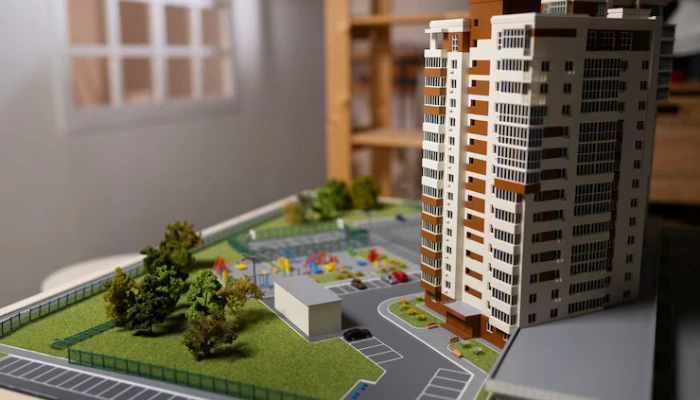Executive Summary
A global pandemic, historic economic change and an unprecedented shift in the housing market have been hallmarks of the past few years. But while these large-scale changes have shifted the landscape and have the potential to reshape buyers’ preferences over the longer term, many behaviors and attitudes remain the same.
The 2023 Consumer Housing Trends Report (CHTR) provides a snapshot of what housing consumers are thinking and doing in mid-2023. In this report, we take a deeper look at new construction buyers — household decision makers that own their primary residence and moved to a new construction home they purchased in the past two years. Information about who new construction buyers are in 2023 can equip consumers with the tools they need to make informed decisions in the current housing market landscape.
Survey Methodology
Research Approach
In order to gain a comprehensive understanding of U.S. new construction buyers, Zillow Group Population Science conducted a nationally representative survey of more than 2,500 new construction buyers – buyers that purchased a new construction home in the past 2 years. To compare with existing home buyers, the survey also sampled over 4,000 existing home buyers that purchased in the past 2 years. The study was fielded between April and July 2023. Wherever possible, survey questions from previous years were asked in the same manner this year to allow for the measurement of year-to-year trends in key areas of interest.
For the purpose of this study, “new construction buyers” refers to household decision makers 18 years of age or older who moved to a newly built primary residence that they purchased in the past two years. To qualify, the residence had to be built in the past two years and they had to be the first household to live there.
Sampling & Weighting
Results from this survey are nationally representative of new construction buyers. To achieve representativeness, ZG Population Science used a two-prong approach. First, the initial recruitment to the sample was balanced to all new construction buyers from the U.S. Census Bureau, 2021 American Community Survey (ACS) on the basis of age, relationship status, income, ethnicity/race, education, region and sex. Additional targeted subgroups were sampled based on all key household demographic characteristics. Second, statistical raking was used to create calibration weights to ensure that the distribution of survey respondents matched the U.S. population with respect to a number of key demographic characteristics. [1]
Quality Control
To reduce response bias, survey respondents did not know that Zillow Group was conducting the survey. Several additional quality control measures were also taken to ensure data accuracy:
- We identified and terminated any professional respondents, robots or those taking the survey on multiple devices.
- Completion times were recorded to ensure that surveys submitted by the fastest respondents, who may have rushed through the survey, did not provide poor quality data. If necessary, these respondents were removed from the sample.
- In-survey quality control checks identified illogical or unrealistic responses.
Additional Data Sources
Unless otherwise specified, estimates in this report come from the Consumer Housing Trends Report (CHTR) 2023, and year-over-year comparisons also use data from CHTR 2018, CHTR 2019, CHTR 2020, CHTR 2021 and CHTR 2022. To provide a fuller picture of the state of home rentals and buyers’ characteristics, preferences and behaviors, we also analyzed data from other sources:
- U.S. Census Bureau, 2022 American Community Survey – The most recently available dataset from the U.S. Census Bureau’s survey of the U.S. population. The ACS is the nation’s largest survey and is based on a probability sample; as such, it is considered one of the leading sources of information on U.S. population and housing.
- U.S. Census Bureau, 2021 American Community Survey – At the time of recruiting the survey, weighting, and tabulating results, the 2021 ACS dataset was the most recently available dataset from the U.S. Census Bureau’s survey of the U.S. population.
- U.S. Census Bureau, 2022 Current Population Survey Annual Social and Economic Supplement – The CPS ASEC offers the most recent demographic estimates on the US population.
- Zillow.com website metrics – To provide additional context for survey results, ZG Population Science also examined internal Zillow data on listing information.
The Typical Buyer & Home Bought
In this section, we provide a high-level overview of key information on both new construction and existing home buyers, as well as the characteristics of the homes they buy. According to the Census Bureau American Community Survey (ACS), 5% of adults in the country are recent buyers. Just under 1% (0.7%) of households are new construction buyers. Throughout this section, information about new buyers comes from CHTR, and information about other groups comes from ZG Population Science analyzes using ACS data. [2]
Age
Both new construction and existing home buyers are generally similar in age. The median ages of both types of buyers are remarkably similar – differing by no more than one year.
| Age Group | New Construction Buyers | Existing Home Buyers |
| Ages 18-29 | 14% | 19% |
| Ages 30-39 | 30% | 26% |
| Ages 40-49 | 22% | 18% |
| Ages 50-59 | 13% | 16% |
| Ages 60-69 | 13% | 13% |
| Ages 70+ | 9% | 8% |
Sources: US Census Bureau, 2021 American Community Survey.
Consistent with age, the largest generational group of new construction buyers is between 29 and 43 years old in 2023 — the group colloquially known as “Millennials.” About 41% of new construction buyers are Millennials.
| Generation [3] | New Construction Buyers | Existing Home Buyers |
| Gen Z (18-28) | 13% | 17% |
| Millennial (29-43) | 40% | 37% |
| Gen X (44-58) | 25% | 24% |
| Baby Boomer (59-78) | 20% | 20% |
| Silent Generation (79+) | 3% | 2% |
Sources: Census Bureau, 2021 American Community Survey.
Region & Geography
The largest share of new construction buyers live in the South (56%), followed by the West (23%) and Midwest (14%). The smallest share lives in the Northeast (7%).
| Region | New Construction Buyers | Existing Home Buyers | Total Buyers |
| South | 57% | 39% | 41% |
| West | 22% | 22% | 22% |
| Midwest | 14% | 23% | 23% |
| Northeast | 6% | 16% | 14% |
Sources: Census Bureau, 2021 American Community Survey. 2022 Current Population Survey Annual Economic and Social Supplement
About one in every five new construction buyers buys their home in Texas (19%). About one in eight buys in Florida (13%). Of the top ten states for new construction buyers, six are in the South. The other four come from Western states.
Idaho comes close to Texas when measuring the percent of buyers that purchased new construction – 15% in both states. Utah (14%) and South Carolina (14%) follow closely.
| Top 10 States for New Construction | Percent of Buyers that Buy New Construction | Percent of New Construction Buyers | Count of New Construction Buyer Households |
| Texas | 15% | 19% | 69,422 |
| Florida | 10% | 13% | 48,363 |
| California | 5% | 6% | 22,053 |
| Georgia | 9% | 5% | 17,410 |
| South Carolina | 14% | 5% | 17,200 |
| North Carolina | 8% | 4% | 14,334 |
| Tennessee | 11% | 4% | 14,132 |
| Colorado | 8% | 3% | 11,243 |
| Washington | 6% | 3% | 9,379 |
| Arizona | 6% | 2% | 8,785 |















